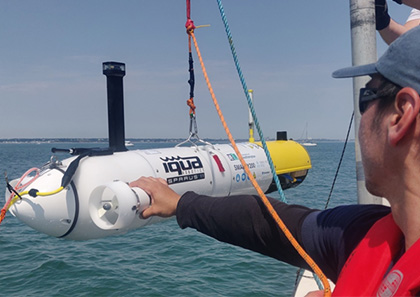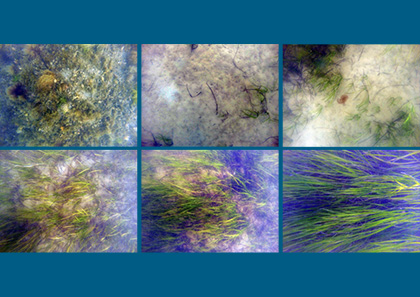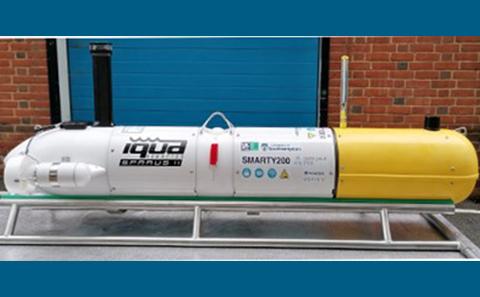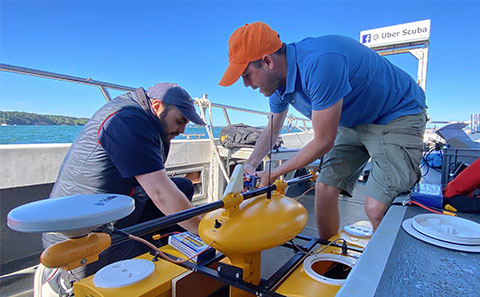Success for AUV SMARTY200 in its maiden mission to survey seagrass in Studland Bay

The Autonomous Underwater Vehicle (AUV) SMARTY200 successfully surveyed seagrass distribution in Studland Bay during its maiden mission in July this year.
SMARTY200 was deployed 8 times and took more than 34,000 photos of the seafloor around the ecomoorings that have been installed in the bay. These ecomoorings help protect seagrass meadows from boat anchor damage, and have been installed as part of a wider conservation initiative supported by the Seahorse Trust, boatfolk, and the Marine Management Organisation (MMO).
During its dives, the AUV kept a height of 1m above the seafloor, using its sensors and thrusters to closely follow the underwater terrain while taking photos of the seafloor. By combining these photos with the AUV’s location information, scientists will be able to build detailed maps of seagrass distribution and identify the different species that live within these habitats. This information will form valuable evidence to support local conservation efforts and monitor the effectiveness of the ecomoorings.
The survey was conducted as part of a SMMI HEIF funded knowledge transfer partnership (PI Thornton, FEPS School of Engineering, IRIS Centre of Excellence) and UoS Geospatial Initiative (PI Kassem, FELS School of Ocean and Earth Science), with partners from the National Trust, Dorset Coastal Forum, Studland Bay Marine Conservation Partnership as well as technology companies Sonardyne International and Voyis.
Blair Thornton, Professor of Marine Autonomy and SMMI academic says:
“It’s great to be able to contribute to marine conservation on SMARTY200’s maiden cruise. The fact everything ran smoothly is thanks to the dedicated efforts of our team members and our partner organisations.”
He continues:
“We need to keep putting our robots out in the field. It is critical for driving progress in robotics, but also important to build trust within the science and conservation communities that the technology is effective in real-world scenarios.”
Dr Miquel Massot, Senior Research Fellow at Southampton states:
“Robotic submersibles like SMARTY200 can dive deeper and cover much larger areas than human divers. They also know their position underwater very accurately, which makes repeat monitoring of large areas possible. This is important for us to capture how underwater environments change over time.”
You can see SMARTY200 in action in this video.

Some of the pictures SMARTY200 took during the survey, showing algae (top left) and examples of seagrass with various degrees of cover.
SMMI Academics:

Autonomous Underwater Vehicle SMARTY200
The University of Southampton (UoS) has acquired the ‘SMARTY200’ Autonomous Underwater Vehicle (AUV) to develop intelligent subsea mapping capabilities as part of a EPSRC core equipment grant.

New mapping tools helping to protect seagrass
Could using autonomous systems and artificial intelligence (AI) help marine conservation?